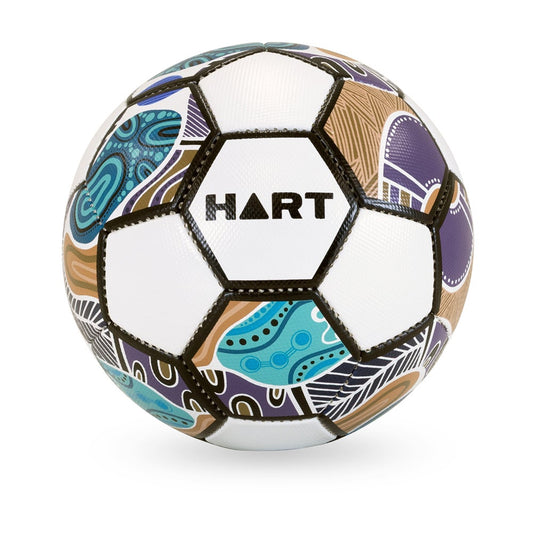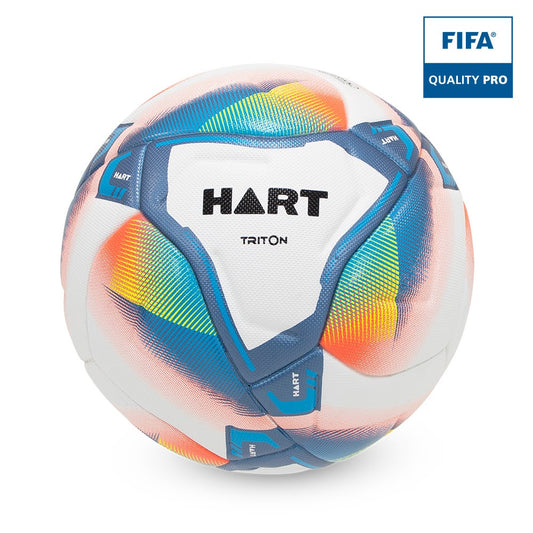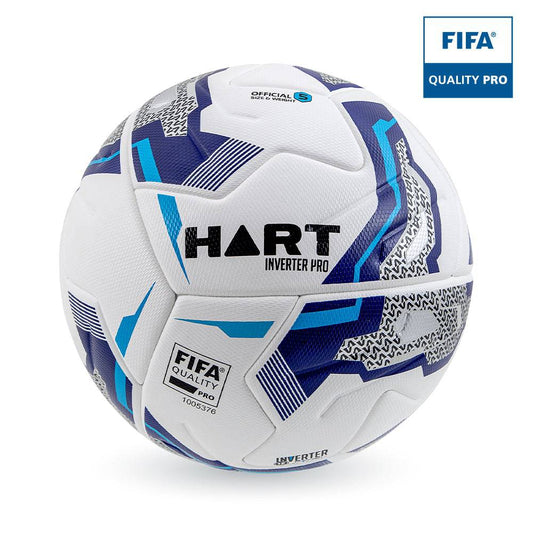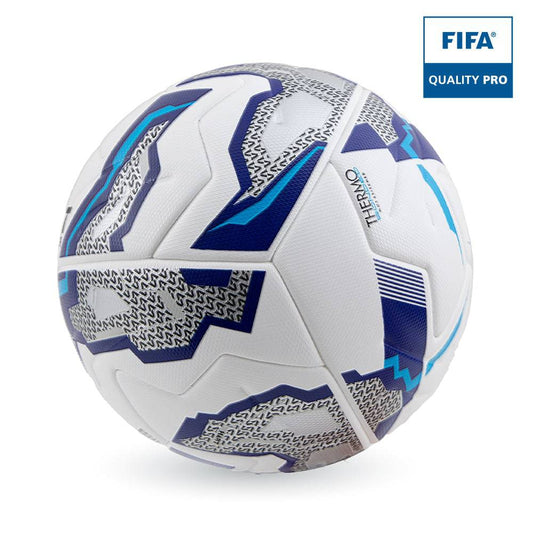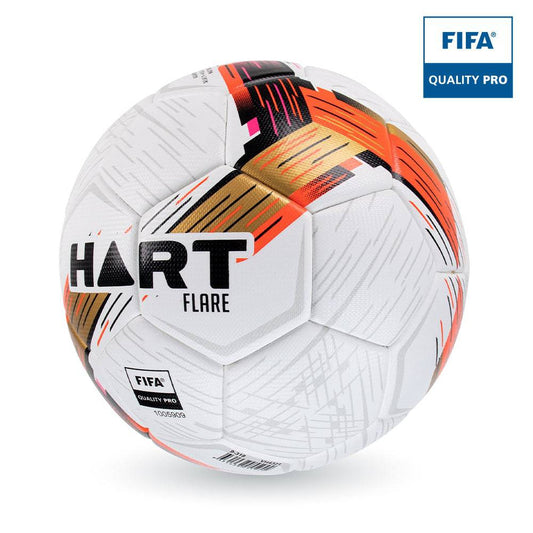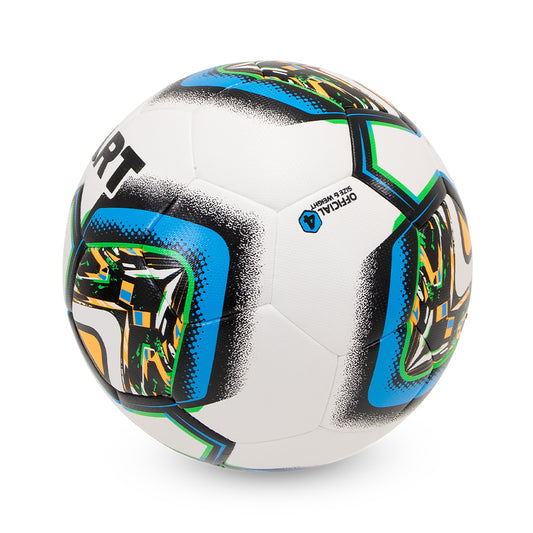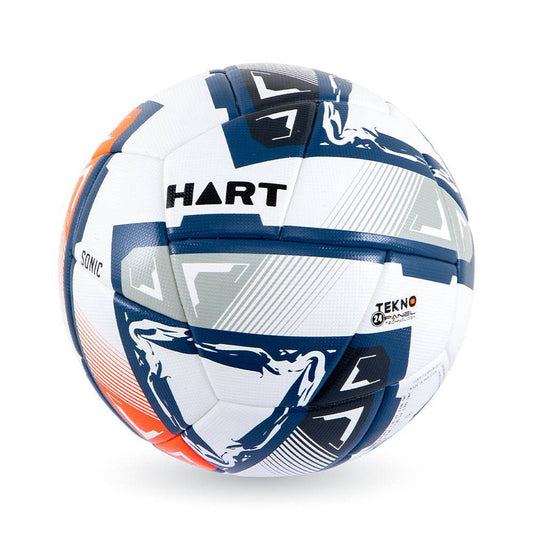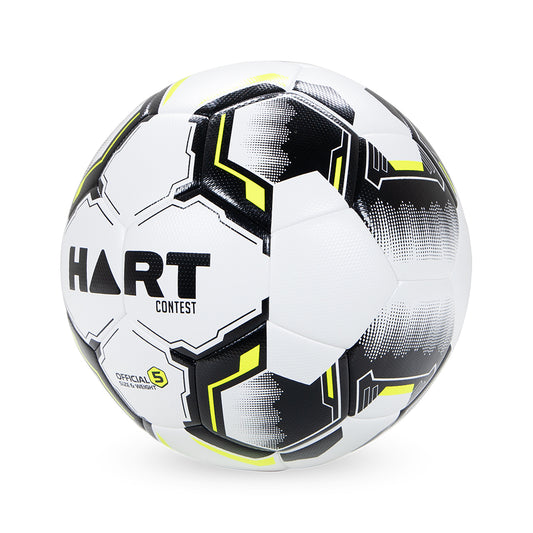How to Choose Your Soccer Ball
Choosing a soccer ball may seem simple at first, but with so many options available, it can quickly become confusing. From different materials and construction to various sizes and types, there’s a lot to consider when making your choice. At HART Sport, we’ve broken down all the key details you need to know to make the perfect choice for your game.
Types of Soccer Balls
Match Balls: Designed for official gameplay, match balls adhere to strict regulations regarding size, weight, and shape retention. These balls are engineered for optimal performance on grass or approved match surfaces.
Training Balls: Built for practice and recreational use or some lower levels of match play. Training balls are designed to endure longer sessions on various playing surfaces. They are typically more durable and perfect for repeated use.
FIFA Quality Pro: The FIFA Quality Programme for Footballs was introduced in 1996 to harmonise and improve the quality of footballs. Focusing on the ball, the very heart of the game, the prestigious FIFA quality labels are only given to balls that have passed rigorous testing. FIFA Quality Pro is reserved for only the best standard of match balls available, and HART Sport is proud to be one of the Australian brands to hold the FIFA Ball license.
Thermo-Bonded vs. Stitched Soccer Balls
Both construction methods significantly impact the ball's feel, durability, and performance.
Thermo-Bonded Balls
| Feature | Thermo-Bonded Balls | Hand-Stitched Balls | Machine-Stitched Balls |
|---|---|---|---|
| Construction | Heat and pressure fuse panels together, creating a seamless surface with no stitching. | Panels are stitched by hand, allowing flexibility in padding. | Panels are stitched by machine, making the process faster and more cost-effective. |
| Durability | More robust and resistant to wear and tear. | Generally more durable than machine-stitched balls. | Generally less durable than hand-stitched or thermo-bonded balls, primarily used for training. |
| Performance | Offers greater accuracy, consistent flight paths, and improved ball control. | Offers a classic touch and feel. | Primarily designed for training use. |
| Weather Resistance | Reduces water absorption, maintaining weight and size in all conditions. | Not specifically mentioned. | Not specifically mentioned. |
| Material | Typically made from 100% polyurethane (PU). | Usually made from 100% polyurethane (PU). | Typically made from thermo polyurethane (TPU). |
| Storage | Must be stored and shipped inflated as they cannot be deflated. | Can be deflated for easier storage and shipping. | Can be deflated for easy storage. |
| Best for | Professional and elite match play. | School or club training and community matches. | Training sessions, particularly for youth and recreational use. |
Choosing the Right Ball for Your Team
When selecting soccer balls for your club or team, consider the level of play and your budget.
Elite Match Play: Thermo-bonded balls offer superior performance but come at a higher price. They are perfect for professional or semi-professional matches where precision is crucial.
Community Matches: Either thermo-bonded or hybrid balls provide an excellent balance of quality and durability.
Junior Matches: Hand-stitched balls or machine-stitched balls are durable and suited for younger players.
Training Sessions: Using the same type of ball in training as in matches helps players acclimate to the ball’s weight and feel. For elite training, thermo-bonded balls are recommended, while hybrid, hand-stitched or machine-stitched balls work well for community and junior training.
Soccer Ball Sizes
| Size | Age |
|---|---|
| Size 1 (Mini) | Great for developing footwork skills and for fun. |
| Size 3 | Under 9 years |
| Size 4 | 10 to 13 years |
| Size 5 | 14 years+ The largest and official size for players aged 12 and up, used in adult and professional leagues. |
Other Soccer Ball Variations
While the standard 32-panel, size 5 soccer ball is common, there are other specialised types you might encounter:
Futsal Balls
Size 4 with low bounce to suit fast-paced indoor play.
Indoor Soccer Balls
Typically size 4 or 5, these balls have less bounce to suit fast-paced indoor play and may feature felt or suede casings for a soft feel.
Beach Soccer Balls
Size 5 but lighter and softer for barefoot play, these balls are usually brightly colored for visibility on sand.
Final Kick
Choosing the right soccer ball at HART Sport comes down to understanding your needs, level of play, and the environment where you’ll be using it. Whether you're shopping for a match, training, or a specialized ball, knowing the key differences in size, material, and construction will help you find the perfect fit for your game.







